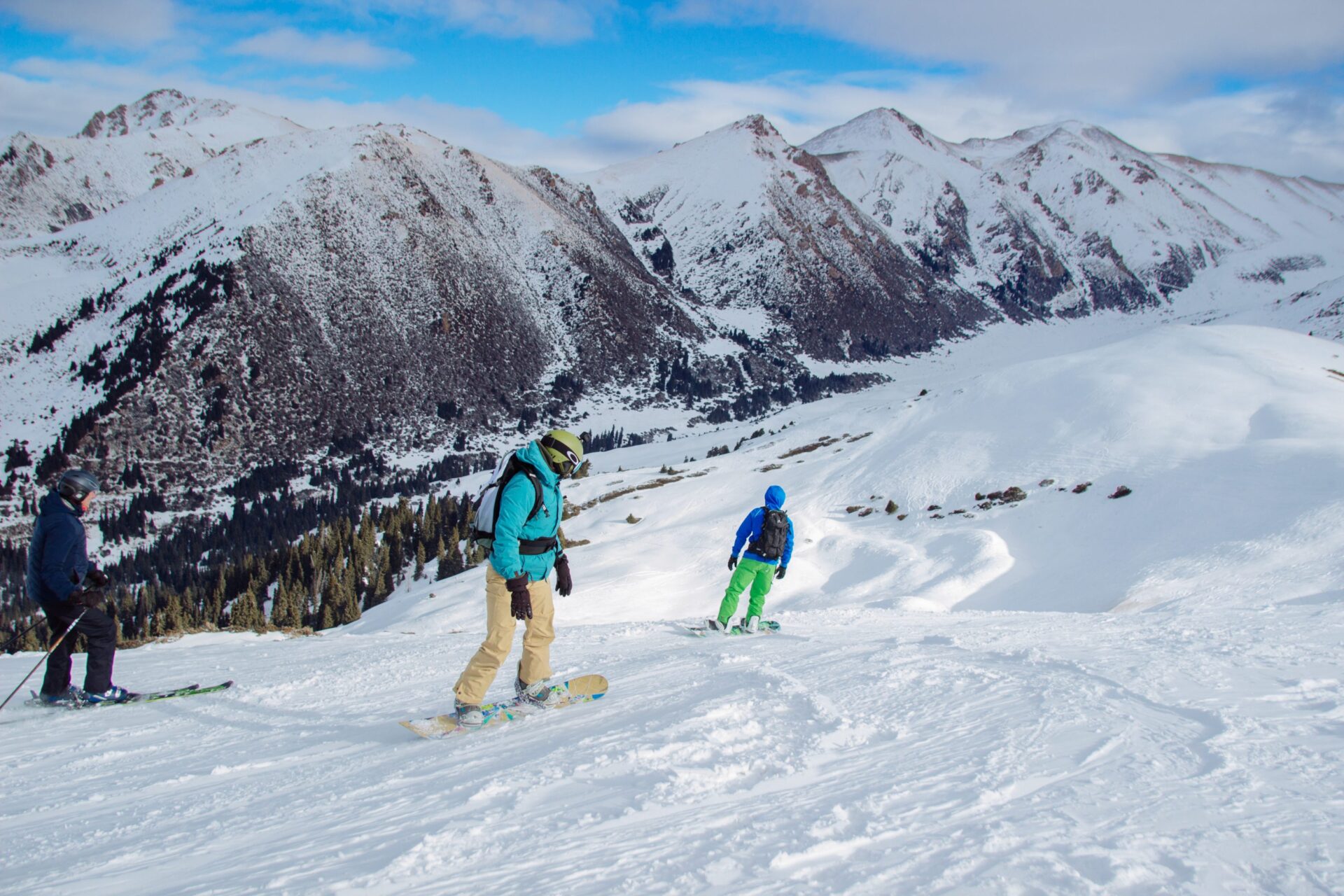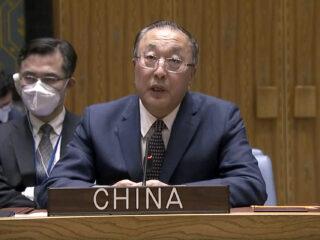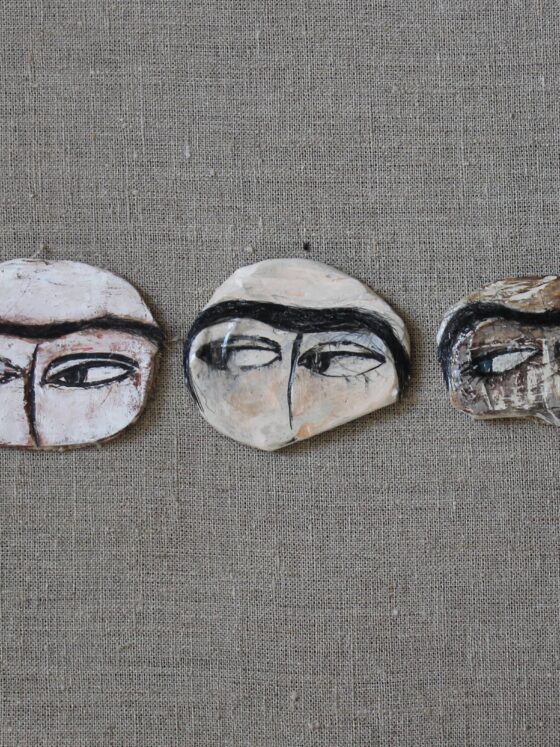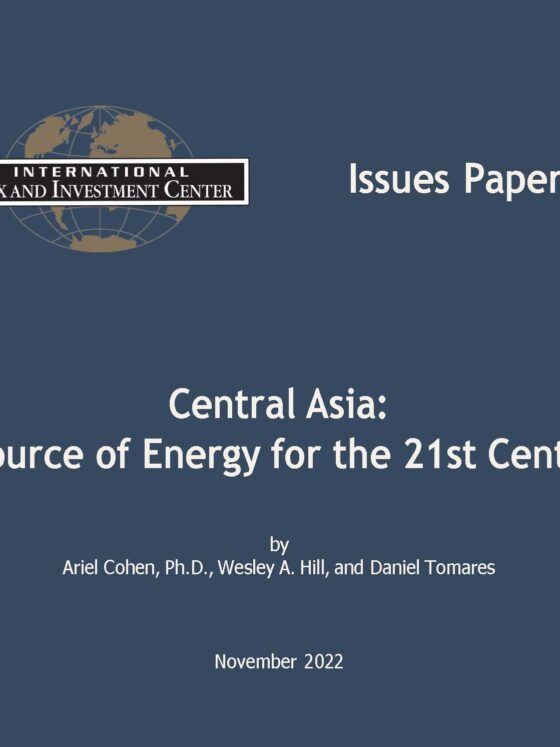By Zalina Enikeeva
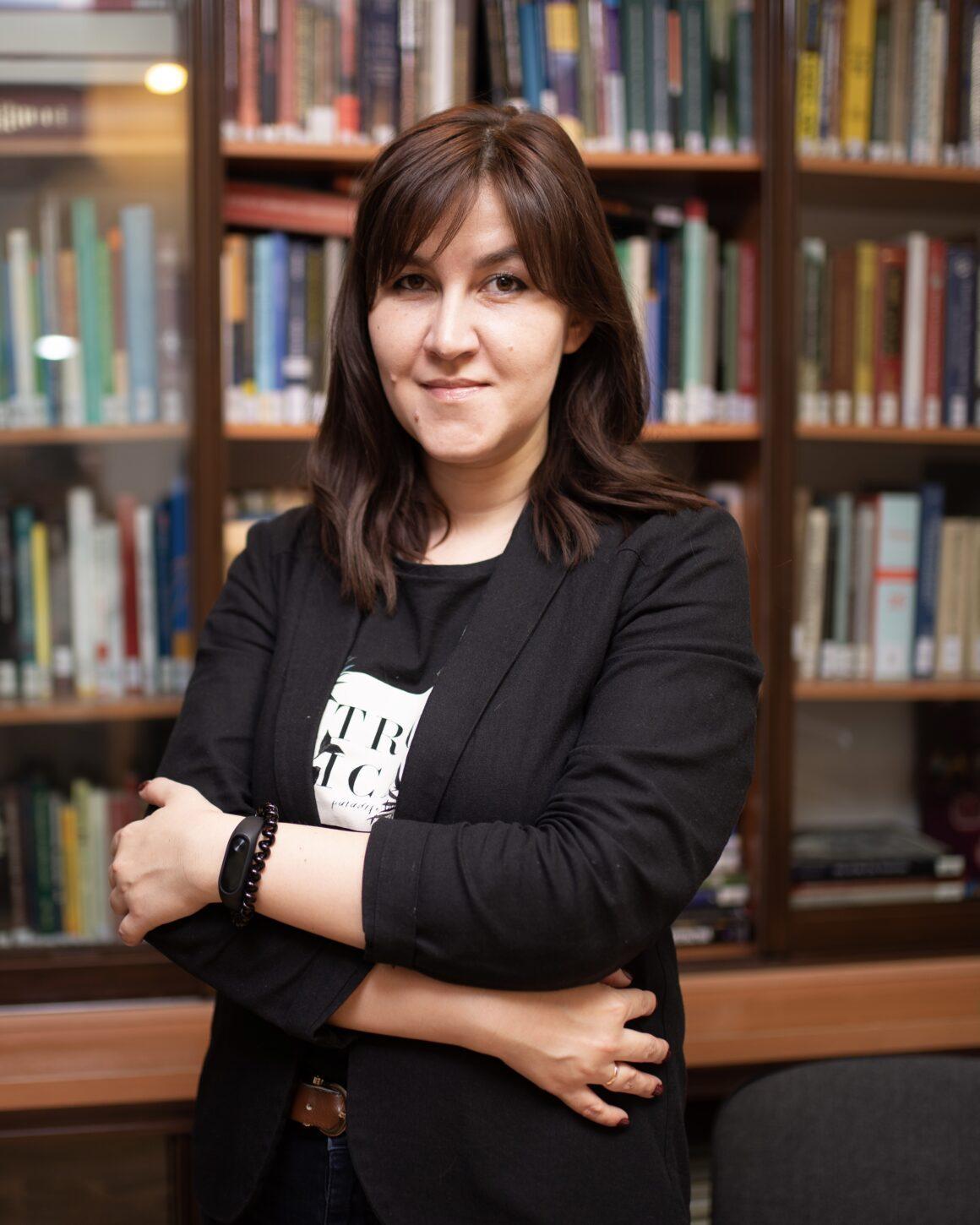
Zalina Enikeeva is a research fellow at the University of Central Asia’s Institute of Public Policy and Administration. She holds a MA in Economic Governance and Development from the OSCE Academy in Bishkek, Kyrgyzstan. She has extensive experience with the Higher School of Economics, the World Bank Group, the German Society for International Cooperation, and the United Nations Economic and Social Commission for Asia and the Pacific. Her expertise includes integration of the Eurasian Economic Union (EAEU), non-tariff measures, international trade, food security, and tourism.
Zalina Enikeeva is the finalist of the Oumirserik Kassenov grant competition awarded by the Central Asia Program of George Washington University. The purpose of the grant is to support research on security, political, economic, and social developments in Central Asia. The strength of Enikeeva’s study is its focus on concrete features of digital transformation in Kyrgyzstan’s tourism sector and its linkages with Kazakhstan’s market. There is a short supply of such research, considering various aspects of intra-regional interaction and cooperation, and supported by empirical data collected in the field. We hope this paper will serve as an inspiration for young scholars in Central Asia.
Kyrgyzstan is the second most popular tourist destination for Kazakhstani population, after Russia. However, the number of Kazakh tourists has decreased since 2016. Among the reasons for the decrease are the economic crisis in Kazakhstan and the devaluation of its currency in 2015.
Kazakh tourists vacation mostly at Issyk-Kul Lake, with its sunny beaches in the summer and ski slopes in the winter. The famous Karakol ski resort is seven kilometers from Karakol city. In 2004, the ski resort was modernized, and today it is a popular destination for professional athletes and fans of mountain activities. The shortest route from Almaty to Karakol is a little over a five hour drive (368 kilometers). Over the past few years though, many Karakol private business owners have complained that fewer and fewer tourists from Kazakhstan are coming to Karakol, choosing instead to vacation within Kazakhstan.
This paper provides an analysis of the state of the winter tourism industry in Karakol, focusing on the flow of tourists from Kazakhstan to Karakol and evaluating the digital tourism products being adopted by both countries. It also provides recommendations on how to boost tourist flows from Almaty to Karakol, even in light of the global COVID-19 pandemic.
Background
Kyrgyzstan and Kazakhstan are two neighboring countries closely linked by deep historical, cultural, and economic ties. Since the breakup of the Soviet Union, the fundamental document of cooperation between the Republic of Kazakhstan and the Kyrgyz Republic has been the Treaty of Eternal Friendship (established April 8, 1997), which expresses the need for the development of a comprehensive cooperation in the spirit of brotherhood, friendship, and mutual understanding.[1]
The Kyrgyz and Kazakh peoples have been considered fraternal nations since ancient times. They are closely related to each other by kinship, linguistic, and cultural roots. Their shared border is more than 1,200 kilometers long, making the idea of closeness more than just an abstract concept.[2] Besides cultural and historical ties, the countries also have a close economic relationship. Kazakhstan is Kyrgyzstan’s third-largest trading partner and Kazakh money accounts for around eight percent of foreign investment in Kyrgyzstan. Kyrgyzstan enterprises backed by Kazakhstani capital are centered in finance, mining, food production, trade, transport, communications, and construction, among other sectors.[3] At the same time, registered Kyrgyz enterprises operating in Kazakhstan are mostly engaged in wholesale and retail trade, construction, car sales, cattle breeding, agriculture, and publishing.[4] In 2015 a new chapter in the relationships between Kyrgyzstan and Kazakhstan began when they both became members of the Eurasian Economic Union (EAEU), along with Belarus, Armenia, and Russia. Upon joining the union, they pledged to allow the free movement of goods, services, capital, and people across member states.
Digital Tools Used in the Tourism Sector Worldwide
In today’s modern world, one cannot imagine traveling without a preliminary internet search for relevant information about a destination. The need for a digital transformation in the tourism sector is more necessary now than ever before. Regretfully, most attention is focused on the digital transformation of trade and e-commerce and little attention has been paid to digital tourism.
According to the OECD, “digital transformation refers to the economic and societal effects of digitization and digitalization, where digitization is the conversion of analogue data and processes into a machine-readable format, and digitalization is the use of digital technologies and data as well as interconnection that results in new activities or changes to existing activities.”[5] In the tourism sector, a digital transformation might open new markets, e.g. countries and destinations, produce new tourist products, create new destinations, and provide more effective business models. Small and medium enterprises (SMEs) operating in the touristic sector would reap the greatest benefits from a digital transformation, allowing them to increase efficiency and capacity as well as internationalize their operations.[6]
According to an analysis by Dianne Dredge and colleagues, digital innovations have resulted in five major transformations in the tourism industry since 1990.[7] After disruption (see table 1), where the rise of the platform economy occurs and new value creation opportunities appear, the new destination configurations take place. It includes information about the possibility to emerge to new customized destinations that leads to the creation of unique business models, value chains and even ecosystems. Development of such digital platforms as Airbnb, Uber, and others is a good example of such transformation. After this phase, roles of consumers and producers change, and tourists can create a new product (destination) by designing an unusual route. All these lead to establishing new roles for tourism organizations, where the traditional roles of tourism organizations are transformed.
Table 1. Transformations in tourism resulting from digitalization
| Disruption | New destination configurations | New business models, value chains, and ecosystems | Changing roles of consumers & producers | New roles for tourism organizations |
| Big data improves management Disruption to incumbent operators and pressure to reconceptualize traditional business models Rise of the platform economy, on-demand business New value creation opportunities Emergence of global value chains | Digitalizationallows greater customization of visitor experiences, new customized destinations emerge | New actors such as online platforms act as information brokers and intermediaries (e.g. Expedia, TripAdvisor, etc.) offer many services traditionally offered by tourism organizations. Digital platforms (e.g. Airbnb, Uber) are expanding beyond accommodation products to curate, coordinate, and facilitate visitor experiences in a destination. | Visitors have become prosumers actively producing and consuming their own experiences. They take on different roles, including booking, (self)guiding, reviewing, sharing and marketing the destination. | Destination marketing and product development, the traditional roles of tourism organizations, are transformed, and these organizations find themselves increasingly in facilitation and capacity building roles with less and less direct influence over destination development, innovation, and marketing |
Source: Taken from Dredge, D. et all (2018)
The tourism sector uses a broad range of digital tools for different aspects of business, like allowing customers to use mobile payments. Thus, some hotels allow clients from China to pay for their stay via WeChat and Alipay applications.
The study conducted by Fotis, J. et all (2012) on the role and impact of social media on the whole holiday travel planning mechanism is mostly focused on enhancing customers’ knowledge about touristic products, including the use of different digital social media tools. Results show that as people spend more and more time on online social networks and messaging platforms every year, the tourism sector is adapting and developing a presence across social media channels, review websites, video sharing platforms, and virtual gaming sites.[8]
According to a 2015 TrustYou study, 95 percent of surveyed tourists use online review sites like Tripadvisor to help them make their final travel plans.[9] While a hotel’s overall brand reputation is still important, potential guests want to know all the details about a potential accommodation prior to booking.
It’s also common for businesses in the tourism industry to use social media channels such as Facebook, Instagram, and Tripadvisor. First, there’s a low cost of entry; and second, with little technical skill, a business can do a lot to improve its online visibility through social media tools such as stories, live streaming, and hashtags, among others.
As the private sector goes through a digital transformation, the public sector is struggling to keep its policies up to date. The OECD report, “Going Digital: Shaping Policies, Improving Lives,” explains how the gap between technological developments and public policies should be narrowed significantly in order to reap the benefits from tourism and address the evolving challenges of the digital age. Many current policies used in the tourism sectors were developed in the pre-digital era and difficulties in understanding the changes and their implications may delay the amending of these policies.[10]
Digital Agenda and Cooperation
As members of the Eurasian Economic Union (EAEU), Kazakhstan and Kyrgyzstan, along with Armenia, Belarus, and Russia, adopted the Digital Agenda 2025 strategy on December 26, 2016. The medium-term strategic document defines the goals, principles, tasks, directions, and mechanisms of cooperation between member states for the digitalization of certain sectors. The agreement covers a range of digital transformation topics within the framework of developing integration, strengthening the common economic space, and deepening cooperation among member states.[11] The Digital Agenda has the following goals:
- accelerate the transition to a new techno-economy
- foster high-quality and sustainable economic growth
- create an enabling environment for innovation
- create new industries and market
- update mechanisms for better integration and cooperation
- increase efficiency of economic processes
- enhance the competitiveness of EAEU economies
In addition, each county has its own national digital transformation program. In 2019, Kyrgyzstan adopted the Concept of Digital Transformation: “Digital Kyrgyzstan 2019-2023.” The strategy determines the structure, management system, and basic processes for the country’s digitalization effort. Moreover, it identifies the main sectors of the economy where digital transformation is a priority: agriculture, light industry, tourism, and creative economy (which includes creation of computer games, music and images, architecture, advertisements, art and design, fashion, making films etc.).
In 2017, Kazakhstan adopted the state program Digital Kazakhstan, which aims to improve the living standards of every resident in the country with the help of digital technologies. The program also aims to improve the efficiency and transparency of public administration, ensure employment of the population, improve the quality of education and healthcare, improve the investment climate, increase labor productivity, and increase the amount small- and medium-sized businesses contribute to GDP. The program prioritizes several sectors for digital development: agriculture, transportation and logistics, e-commerce, government services, finance, and information and communication technology.
Outside the EAEU, Kyrgyzstan and Kazakhstan also have commitments with other multilateral programs and organizations. For instance, the Asian Development Bank’s Central Asia Regional Economic Cooperation (CAREC) program supports the Almaty–Bishkek Economic Corridor (ABEC), a pilot project that seeks to bridge the distance between the two cities by connecting “people, businesses, and ideas.”[12] The main idea behind the project is that Almaty and Bishkek can achieve more together than they could alone.[13] The cities are 240 kilometers apart and similarly structured with a relatively high economic density concentrated in services in the urban areas and agriculture in their hinterlands. The corridor aims to build cooperation not only in trade but in tourism as well. The mountain range between Almaty and Bishkek and nearby Issyk-Kul Lake has a great potential to attract international tourists.
Picture 1. Almaty – Bishkek Economic Corridor Tourism Project Area

Source: CAREC
A closer review of each country’s digital agenda reveals that the tourism sector is not covered substantially in either country’s digital strategy. Kyrgyzstan’s policy names tourism as a priority sector for digitalization but neglects to provide a detailed plan of further action, making one think that the sense of priority is on paper only. Likewise, the EAEU Digital Agenda 2025, which highlights the necessity of reciprocal efforts of EAEU member-states to achieve digital transformation, lacks visible emphasis or strategy on digitalizing their shared tourism industry. Even the most significant effort to grow tourism in the region, the cooperative Almaty–Bishkek Economic Corridor program, is without a specific focus on digital transformation.
Data Analysis
In the Kyrgyz Republic before the pandemic, expectations for a growth in tourism were corroborated. According to the State Border Service of the Kyrgyz Republic, the annual number of foreign citizens who visited the Kyrgyz Republic rose from 2015 to 2019. In 2015, more than 4 million people visited Kyrgyzstan and in 2019, there were closer to 9 million visitors. Out of the international tourists who came to Kyrgyzstan, most were from CIS countries However, in comparing the number of visitors among CIS countries, it becomes clear that the number of people from Kazakhstan who visited Kyrgyzstan decreased by around 206,000 people from 2015 and 2019, while the amount of people from Uzbekistan increased dramatically (see table 2).
Table 2. Number of foreign citizens visited Kyrgyzstan (in thousands)
| 2015 | 2016 | 2017 | 2018 | 2019 | |
| Total foreign visitors | 4,335.2 | 4,147.4 | 4,666.5 | 7,057.1 | 8,635.7 |
| All CIS countries | 4,156.1 | 3,909.8 | 4,408.6 | 6,771.0 | 8,331.3 |
| Kazakhstan | 3,122.0 | 2,769.1 | 2,778.5 | 2,690.8 | 2,915.6 |
| Uzbekistan | 269.1 | 374.4 | 721.2 | 3,363.7 | 4,662.3 |
Source: State Border Service of the Kyrgyz Republic
Figure 1. Number of foreign citizens visited Kyrgyzstan, thousand people

Source: State Border Service of the Kyrgyz Republic
According to Kyrgyzstan’s National Statistic Committee, business in the Issyk-Kul region account for a significant part of the country’s tourist industry. In 2019, there were 1,753 recreation and tourism institutions (centers) in the Issyk-Kul region, including guest houses, that offered services to visitors. And the number of people who vacationed there in 2019 and used facilities in the formal tourism sector amounted to around 318,600, a 14.8 percent increase from 2018. However, that number does not include the additional 969,300 visitors to the Issyk-Kul region who stayed with friends and family or found accommodation through the informal tourist economy (unofficial guest houses or room rentals), that is 1.5 times more than in the previous year.
It is worth noting that there are not separate statistics for winter and summer tourism in Kyrgyzstan. Instead, the National Statistic Committee’s most recent survey of business entities that provide winter tourism services, fielded from January 25to 10 February 10, 2019, serves as a proxy for data on winter tourism.
There are around thirteen ski bases in Kyrgyzstan, most of them located in Chui and Issyk-Kul oblasts. According to the state project Concept of Sustainable Development of Winter Tourism in the Kyrgyz Republic for the period 2021-2025[14] developed by the Tourism Department, which falls under the Kyrgyz Republic’s Ministry of Ministry of Culture, Information, Sports and Youth Policy of the Kyrgyz Republic, winter tour packages range from high-quality, guided tours that can be one day to multiple weeks long to inexpensive self-guided skiing and snowshoeing excursions without professional guides. Tour prices range from free (self-guided audio tours downloadable from the internet) to $4,500 per person (a weeklong heli-ski tour).[15] Most guided tours have a minimum cost of around $100 per person per day.
Karakol Ski Resort
The focus of this research is the modern ski resort Karakol, located seven kilometers from the city of Karakol in the Issyk-Kul region. In the Soviet times, it was used as a training base for the USSR Olympic team.
Picture 2. Location of the Karakol ski resort

Source: https://www.google.com/maps
After the reconstruction of the ski lifts and the construction of new hotels, the Karakol ski resort started receiving tourists from Russia, Kazakhstan, and Uzbekistan, in addition to domestic tourists. Visitors were attracted by off-piste skiing accessible by cable car, relatively low prices, good level of service, natural beauty, and proximity to hot springs. In 2014, the Karakol ski base was included in a list of the top ten ski bases Russian tourists can go without a visa, according to the Russian edition of Forbes. The city of Karakol itself was included in a 2017 list of the ten most popular destinations for an inexpensive ski trip with children, according to the Russia-based hotel search service RoomGuru.ru.[16]
However, according to managers of tourist organizations in the area, over the past three to four years, the annual number of winter tourists to Karakol has stopped growing, and for some facilities, like the Karakol ski base, the numbers have even started to decline. According to the ski resort’s administration, the share of foreign tourists at the Karakol resort has decreased from 90 percent to 50 or 60 percent over the past ten years. It is important to note that the situation at Karakol has a significant impact on the entire sector of winter tourism in the Kyrgyz Republic.
Kazakhstan has a range of ski resorts in its territory as well, especially in the southern part of the country, not far from the former capital, Almaty. The most significant is the Shymbulak resort, located twenty-five kilometers from Almaty. It has a range of advantages, such as an average seasonal snowfall of nine meters, which exceeds the amount of snow in many alpine resorts. In addition, Almaty’s international airport serves considerably more international flights than Bishkek, making the country’s southern ski resorts easily accessible to outside visitors.
Picture 3. Ski resorts on the southern territory of the Republic of Kazakhstan

Source: https://www.google.com/maps
Nevertheless, Kyrgyzstan’s Karakol ski resort is still more attractive to tourists from Kazakhstan due to lower prices compared to resorts in Kazakhstan, more variety of slopes, and beautiful nature. In the next section, the reason for the decline in Kazakhstani tourism in Karakol is examined as well as the question about whether digital transformation in the tourism sector would help bring back tourists to the area.
Results of the Field Trip to Karakol
A visit to the Karakol ski resort provided further insight into why there has been a decrease in tourists from Kazakhstan during the winter period. The author was in Karakol from February 26 to March 1, 2020, when all borders were still open and there were no officially registered COVID-19 cases in Kyrgyzstan.[17]
During the visit to the Karakol ski resort, there were no tourists from Kazakhstan. As many experts noted, there is a large inflow of tourists from Kazakhstan during Kazakhstan’s national holidays celebrated on December 16 and 17.
Interviews with local experts in the tourism sector, owners of tourism-related businesses, and state authorities helped to identify several problems that are deterring tourists, especially those from the southern part of Kazakhstan, from coming to the Karakol region.
Getting to Karakol
First, according to respondents, a main challenge is getting to Karakol from Kazakhstan. There are two different driving routes from Almaty to Karakol. One route goes through the border crossing at Sortobe, Kazakhstan and into Kyrgyzstan along the Tokmok highway. The duration of this trip is more than eight hours, not counting time spent at the border checkpoint (see picture 4).
Another route takes travelers along the Kegen highway in Kazakhstan, crossing the border into Karkyra, Kyrgyzstan. This route takes a little over five hours (see picture 5). However, the checkpoint is closed during the winter season. In statement in late 2020, the State Border Service of the Kyrgyz Republic said that this checkpoint would be closed from November 30, 2020 to March 1, 2021 “because of the sharp worsening of weather and road conditions, as well as to prevent emergencies.”[18]
In addition, this checkpoint is poorly equipped with modern technologies, making it difficult for travelers with electronic visas to pass through the border. While this is not a problem for citizens of Kazakhstan and Kyrgyzstan as they have visa-free travel agreement, it makes visiting the region more complicated for tourists from other parts of the world.
Picture 4. Route through Sortobe, Kazakhstan onto the Tokmok highway in Kyrgyzstan

Source: https://www.google.com/maps
Picture 5. Route along the Kegen highway in Kazakhstan to Karkyra, Kyrgyzstan
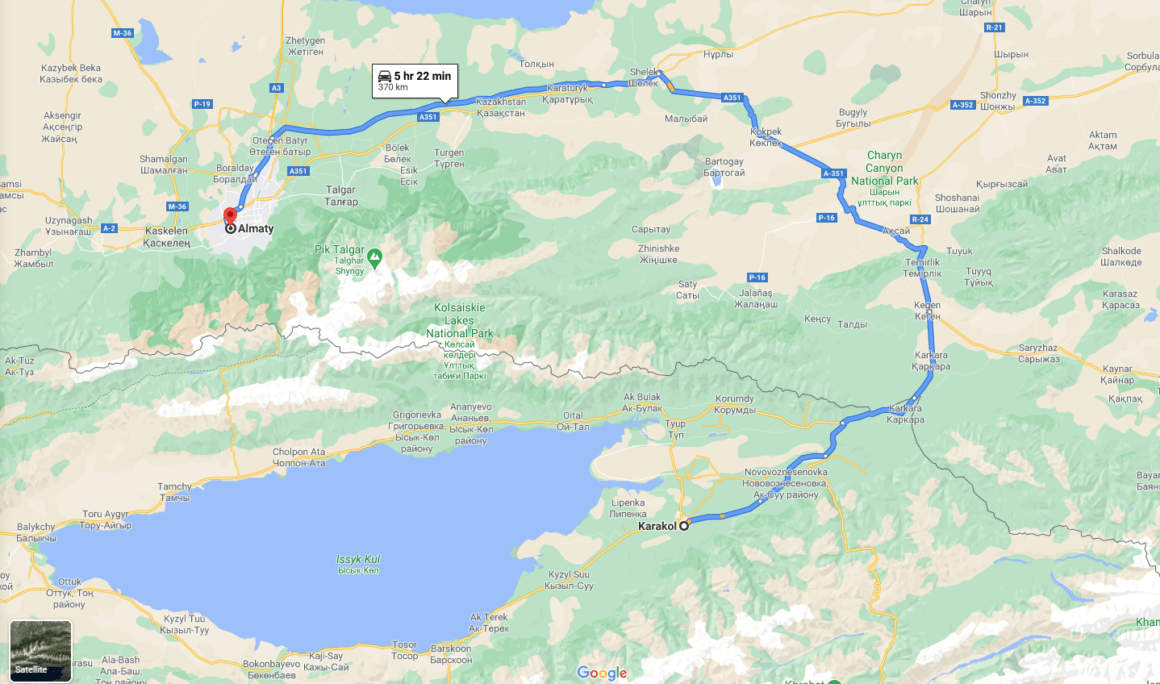
Source: https://www.google.com/maps
An interview with a representative of the state authority confirmed that the Kyrgyz government is aware of the difficulties related with the Kegen-Karkyra border crossing. Part of the 2019 agreement between the World Bank and the Kyrgyz Republic — which led to the launch of the Program on Improvement of Road Communications in Central Asia — intends to rehabilitate the section of highway between Kegen, Kazakhstan and Tyup, Kyrgyzstan to connect (construct a road) to the border with the Republic of Kazakhstan, which will reduce the travel time from Karakol to Almaty by almost twice from 660 to 383 kilometers. [19]
In addition, about 30 kilometers of access roads to tourist sites will be refurbished. It might ease the way to get to the alpinist base in the Karkyra gorge, the place from where tourists begin their climb the Khan-Tengri and Pobeda peaks, to the Karakol national park, as well as to the Karakol airport.[20]
Picture 6. The route from Tamchy to Karakol

Source: https://www.google.com/maps
It is also worth noting that the reconstruction of the Issyk Kul International Airport in Tamchy, Kyrgyzstan led to the creation of a charter flight from Tashkent, Uzbekistan to Issyk Kul in 2019. An airport is a great asset to the region as many international tourists would prefer to come directly by charter flight rather than drive the hundreds of kilometers to Karakol. For example, right now tourists from Russia have to fly to Bishkek and then drive another 400 kilometers from Bishkek to Karakol. Being able to fly there means that Russian tourists can now have a longer vacation skiing and enjoying the Kyrgyz nature during their national holidays in January.
A charter flight from Novosibirsk, Russia to Issyk Kul had its inaugural flight on December 8, 2020, conducted by S7 Airlines.[21] The Kyrgyz government suggests that flights from Kazakhstan, Tajikistan, and Uzbekistan will become available starting in the winter tourism season in 2020.[22] The duration of a flight from Almaty to Bishkek is fifty-five minutes and a flight from Almaty to Tamchy might be even shorter (see picture 6).
Local Infrastructure
Another problem that all people living in and visiting Karakol experience is the poor quality of roads inside the city and leading to the ski resort. The public has tried to bring this problem to the state’s attention, but it is still unresolved. For example, on February 28, 2020 a young man went on a one-person protest with a poster that read, “The road has become non-serviceable” (see picture 7).
Picture 7. Solitary meeting in Karakol

Source: https://vesti.kg/
In a week, another man stood on the streets with a poster that said, “Where are the sidewalks?” to draw attention to the lack of pedestrian walkways and alleys. “Due to their absence, residents and guests of the city are forced to walk in the mud. In winter, it is snow, in spring and autumn — puddles, and in summer — dust. Pedestrians are forced to walk on the roadway,” the activist said.[23]
On the other hand, there are no problems with accommodation for tourists in Karakol city: visitors can find an affordable place to stay at all price levels; there are hotels, hostels, and guest houses. Up in the mountains, the Karakol ski resort also has a large, luxury hotel called the Kapriz Karakol. It is open year-round hotel complex and features a billiard saloon, bowling alley, swimming pool, sauna, kid’s playroom, full-service spa, and other amenities.
According to representatives of the Kapriz Karakol hotel, the number of tourists from Kazakhstan has been declining every year. And while some guests book their stay directly with the hotel, others use Kazakh and Kyrgyz travel agencies.
The Ski Resort
Tourists can rent ski equipment in town or at the Karakol ski resort itself. In Karakol city, there are many equipment rental services supplying everything from ski poles to ski clothing.
However, according to the interviews with tourism sector experts, there are many problems with how the Karakol ski resort is managed. The following are the main issues to take into account:
- Long lines to get ski passes at the base. Experts from the travel website Destination Karakol suggest the resort open an additional ticket office in the city. This way tourists could walk to the office after dinner and buy ski passes for the next day, allowing them to start skiing as soon as they arrive in the following morning without standing in the queue for ski passes purchase. This would be especially helpful during the busy New Year holidays when lines start as early as 8 am.
- Ski lifts are slow and cold. The West Trace ski lift takes 17 minutes to reach the resort’s highest point, Panorama, but it takes only few minutes to ski back down. A skier would only be able to go up and down three times in an hour: skiing for example, 9 minutes by experienced skiers and sitting and freezing on the lift for the remaining 51 minutes. If the chairs were heated, it would make the experience more comfortable.
- Scarce use of snow packing machines, special machine used for snow compacting. Other ski bases in Kyrgyzstan use a snow packing machine daily while Karakol’s administration employs it only one to two times a week.
- Absence of lifts for sledding. For children or adults who do not ski, there is a good sledding run, but there has not been a working lift since the early 2000s and the snowy hill is difficult to climb with a sled in tow. Children often get tired after two or three runs. A new working lift would be attractive for tourists.
- The ice rink is not well maintained. The administration does not regularly clean or remove snow from the rink, making unsafe for skaters. A properly maintained rink could attract visitors who do not like skiing.
Other Tourist Attractions
For leisure time, tourists can visit museums and other historical places in Karakol city, such as the Holy Trinity Cathedral, a Russian Orthodox church built in 1869, and the Dungan Mosque designed by the Chinese between 1907 and 1910 for the local Dungan community and built without a single nail. There is also the Russian quarter with wooden gingerbread houses, the Bugu-Ene Zoo, and the Nikolai Przhevalskii Museum in honor of the 19th century Russian explorer who gave Karakol its original name: Przhevalsk. The Karakol History Museum and its Ella Maillart photography exhibit is also a great place to visit. The museum presents historical, cultural and traditional showpieces about Karakol and Kyrgyz nomadic culture. The museum houses a permanent exhibition of photos from a respected Swiss traveler Ella Maillart, who is first documented European solo female voyager in Central Asia.[24]
Another attraction is the thermal springs in and around Karakol. The Ak-Suu Kench spring is located thirty minutes from the city. Visitors can take a dip in these hot springs to relax and clear the head after an active day.
Picture 8. Ak-Suu Kench thermal springs
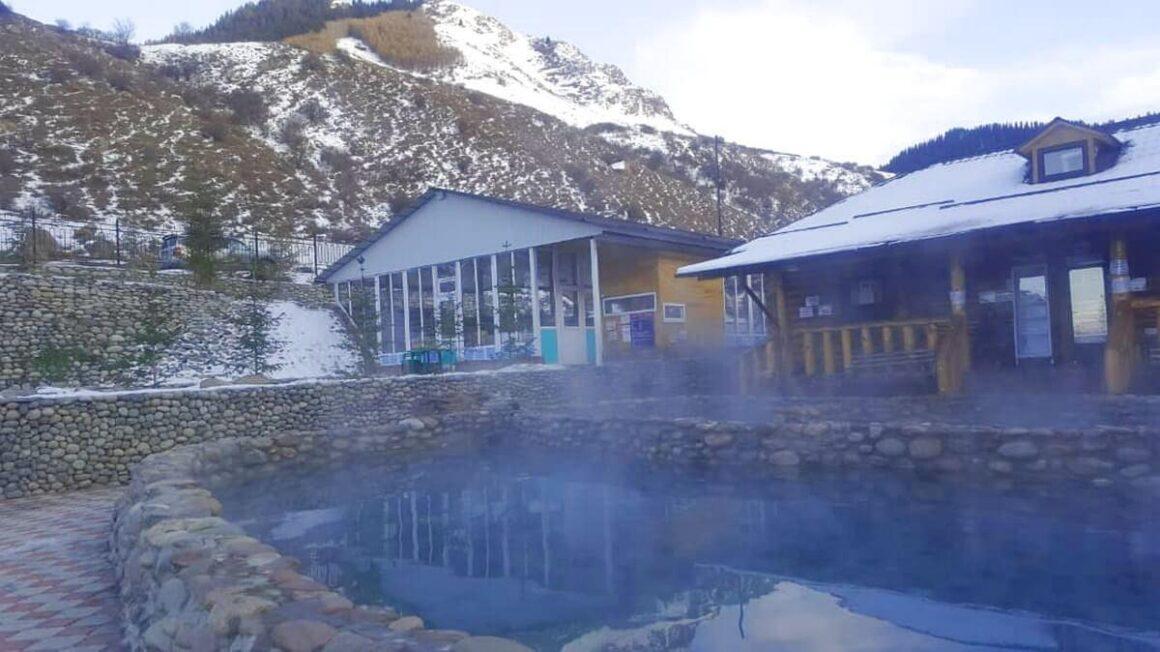
Source: https://www.issykkul.biz/
All information about attractions and entertainment options in Karakol is available on the internet, making planning a trip to the region quick and easy. Because of these digital features the tourism sector develops faster, and tourist outputs become more approachable and more achievable due to digital products.
Digital Products
Global Websites
Interview data suggests that when planning a trip to Kyrgyzstan international tourists, including those from Kazakhstan, use online platforms such as Tripadvisor, Booking.com, and Airbnb to search for accommodation, cafés and restaurants, and sightseeing sites. Some tourists watch YouTube videos about the Karakol ski base made by other tourists who describe their experience from the point of view of an international visitor. Their videos explain how to search for accommodation, suggest how to spend free time in interesting ways, and provide other details that might be of interest to foreign and domestic visitors alike.
Destination Karakol
Besides popular international websites, several local websites offer tourist information about Karakol. The website Destination Karakol,[25] owned by the nonprofit Karakol Destination Marketing Organization (DMO) and founded in 2016, offers a list of accommodations, restaurants, tour operators, and other service providers. Additionally, there is information about the city’s history, sightseeing options, summer and winter outdoor activities, and advice on how to spend free time. Anyone interested in learning about the culinary traditions of different ethnic groups in Karakol can order dinners from local Dungan, Kyrgyz, or Tatar families through the website. A visit to the household can also be organized. The Karakol Destination Marketing Organization also has a visitor’s center in Karakol city where tourists can go in person to receive information.
Izi.Travel
Interviewees also mentioned the storytelling platform izi.TRAVEL, which is available on the web and as a mobile application. Created in 2011by Dutch specialists with the help of Swiss investment, the platform offers free audio guides of cities, museums, and historical sites.[26] The platform allows its users to select a country and city and then choose from a list of free audio tours. Importantly, these tours can be downloaded and made available offline, making them even more convenient for tourists.
Right now, izi.TRAVEL offers tours in four cities in the Kyrgyz Republic, including a walking tour of Karakol. The walking tour maps out a list of Karakol’s top sites, such as the Dungan Mosque, the Holy Trinity Church, and the Tagay-Biy monument and by clicking on the corresponding audio file, tourists can learn history and interesting facts about each site. Through its Business Growth Initiative Project, the United States Agency for International Development (USAID) supported the development of the Karakol City Walking Tour for izi.TRAVEL. The same USAID project also contributed funding toward the creation of Destination Karakol.
Picture 9. Karakol City Walking Tour program on the izi.TRAVEL platform
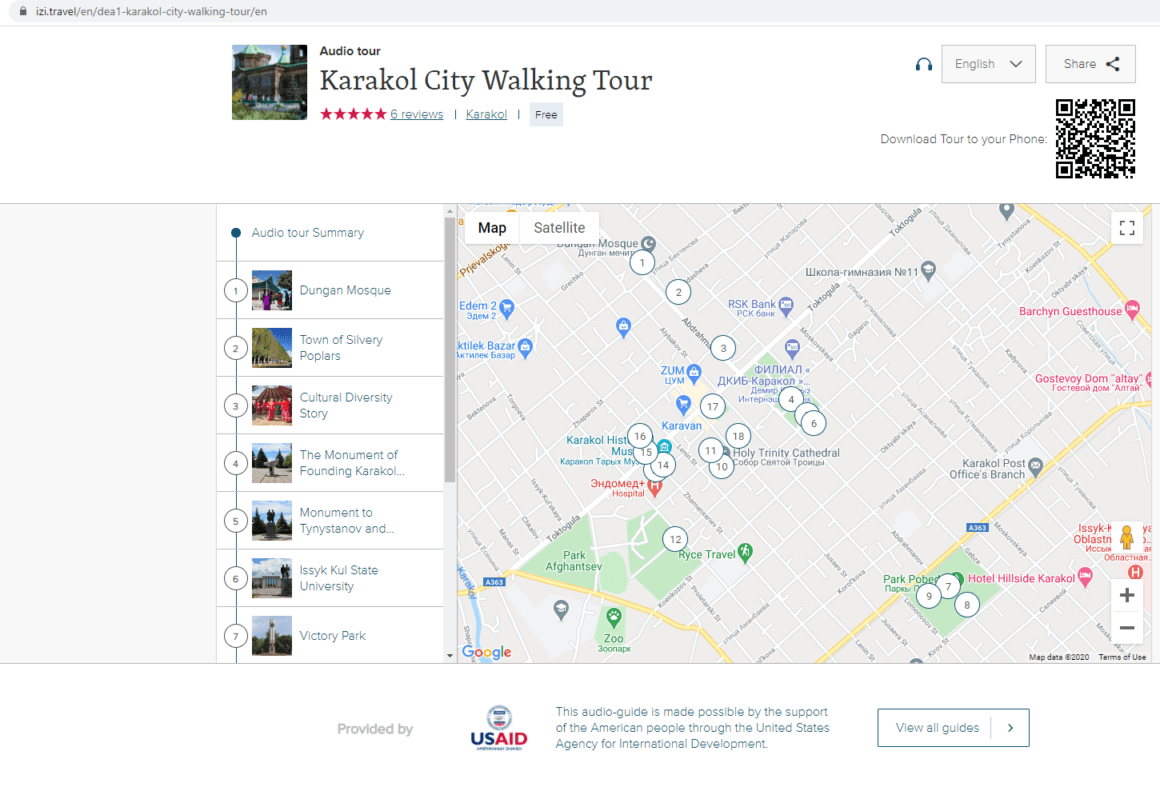
Source: https://izi.travel
However, izi.TRAVEL does not offer audio guides for the Karakol ski resort.
Visit Karakol
Another informative tourist website is Visit Karakol,[27] a site with many amazing pictures of Kyrgyzstan’s nature as well as recommendations for tours, shops, and restaurants. The target audience are English-speaking tourists, especially backpackers interested in trekking tours.
Government Tourism Department
The government’s tourism department has a website[28] (sponsored by the Turkish Agency for Cooperation and Administration) with information about attractions and tourist destination all over the Kyrgyz Republic, including in Karakol. The purpose is to get the attention of international tourists, using marvelous pictures of Kyrgyzstan’s nature, mountains, and lakes to kindle a desire to visit the country. This platform also contains links to other state websites containing information about getting to Kyrgyzstan and how to cross the border.
Social Media
In February 2020, a joint initiative with Kyrgyzstan’s Department of Tourism, international organizations, and tour operators organized the first familiarization tour of the winter attractions of Kyrgyzstan for international travel bloggers and social media influencers. Thanks to the campaign, content on social media with a hashtag #DiscoverKyrgyzstan reached over one million potential tourists and generated about 85,000 responses.[29] In January 2021 the government planned to “expand the practice of inviting international bloggers and journalists to popularize winter tourism opportunities in the Kyrgyz Republic.” However, these plans have not been realized due to the COVID-19 pandemic.
COVID-19
The COVID-19 pandemic hit the global tourism sector especially hard and Kyrgyzstan was no exception. According to rough estimates, due to epidemiological and political upheavals, Kyrgyzstan’s budget has lost about $400 million in tourism since the beginning of 2020. The pause in the economy affected the household incomes, removing winter recreation activities from the family budget.
To combat the pandemic’s toll on the tourism sector, the Department of Tourism, which functions under the Ministry of Ministry of Culture, Information, Sports and Youth Policy of the Kyrgyz Republic, and the SECO project on Sustainable Development of Winter Tourism in Kyrgyzstan developed the Concept of Sustainable Development of Winter Tourism in the Kyrgyz Republic for the period 2021-2025. The SECO project is implemented by Helvetas Swiss Intercooperation.
To support small business and the tourism sector, Kyrgyzstan reopened its borders and allowed all foreign citizens to enter the country starting December 4, 2020, in accordance with the procedure established by visa legislation.[30]Previously, only citizens of thirty-three countries could enter the republic.[31]
The ski resort’s representative noted that they usually sign yearly contracts with tourism companies in Kazakhstan who organize trips to Kyrgyzstan; however, in 2020, those contracts were not renewed. As a result, the resort expected fewer tourists from the neighboring country that season. Theoretically, Kazakh tourists could travel to Kyrgyzstan by airplane, landing in Bishkek and then traveling by car to Karakol. But the costs of such a trip are high. In January 2021, the cost of a return flight from Almaty to Bishkek was around $225;[32] before the pandemic the same flight cost approximately $150.[33]
Conclusion
Kyrgyzstan’s winter tourism industry is experiencing hard times. Despite an increase in domestic tourists to the Karakol ski resort, the number of tourists from Kazakhstan keeps falling. There are several reasons for the decline: long distance, poor quality of roads in the city, and a lack of activities except for skiing. Moreover, southern Kazakhstan has a range of ski bases that compete with the Karakol ski resort, attracting tourists from other neighboring countries.
There are several digital platforms that international tourists use when making travel plans to Karakol, such as Tripadvisor, Airbnb, and Booking.com. In addition, local websites like Destination Karakol and VisitKarakol provide more detailed information and offer a way to order some products from local residents. To boost interest in traveling to the area, Kyrgyzstan’s Tourism Department initiated an internet campaign on social media, working with international bloggers to videos and posts with the hashtag #DiscoverKyrgyzstan. The results were quite successful.
International organizations are also working to promote tourism in Kyrgyzstan and Kazakhstan. The Asian Development Bank’s CAREC program established the Almaty-Bishkek Economic Corridor aimed at enhancing the partnership between the two countries and making the connection between them faster and easier. This would make it more convenient for international tourists to visit places in both Kazakhstan and Kyrgyzstan (including Issyk-Kul and Karakol) in one visit. Other tourist segments (ski, nature and soft adventure, cultural) should offer similar convenience for tourists, including from Kazakhstan. Other needed improvements include reducing the travel time between the Bishkek airport and Issyk-Kul, opening an year-round checkpoint from the Kegen highway to Karkyra, and developing other international airports in the Issyk-Kul region.
To hold onto current visitors and bring in more international tourists, additional improvements are needed at the Karakol ski resort, such as enhancing ski trails, expanding the number of skiing pistes, making ski lifts more pleasant and convenient, and preventing long lines to buy ski passes. Other outdoor activities, such as ice rinks and lifts for the sledding runs, should be made available for those who are not fans of skiing. Such facilities existed in the past but are either poorly maintained or not maintained at all.
In summary, stakeholders of winter tourism in Kyrgyzstan, including managers of the Karakol ski resort, should work together to attract international tourists. Otherwise, existing tourists will switch to Kazakhstan’s ski resorts. Even those who live in Kyrgyzstan may go across the border for skiing if they can get better infrastructure for the same amount of money.
[1] “Treaty on the Eternal Friendship between the Kyrgyz Republic and the Republic of Kazakhstan,” signed April 8, 1997, Law of the Kyrgyz Republic no. 112, http://cbd.minjust.gov.kg/act/view/ru-ru/17031?cl=ru-ru.
[2] Government of the Kyrgyz Republic, “Resolution: On the Draft Law of the Kyrgyz Republic ‘On the Ratification of the Treaty Between the Kyrgyz Republic and the Republic of Kazakhstan on the Demarcation of the Kyrgyz-Kazakh State Border, signed on December 25, 2017 in the City of Astana,’” dated January 26, 2018, no. 53, http://cbd.minjust.gov.kg/act/view/ru-ru/12079.
[3] “Trade and Economic Cooperation,” Kyrgyz Republic Embassy in the Republic of Kazakhstan, https://mfa.gov.kg/ru/dm/Embassy-of-the-Kyrgyz-Republic-to-the-Republic-of-Kazakhstan/Menu—Foreign-/–uslugi/Trade-and-Economic-Cooperation/rade-and-Economic-Cooperation.
[4] Ibid.
[5] Organization for Economic Cooperation and Development, OECD Tourism Trends and Policies 2020 (Paris: OECD Publishing, 2020), chap. 2, OECD iLibrary, https://doi.org/10.1787/6b47b985-en.
[6] Ibid.
[7] Dianne Dredge, Giang Phi, Renuka Mahadevan, Eóin Meehan, and Elena Silvia Popescu, Digitalisation in Tourism: In-Depth Analysis of Challenges and Opportunities, report for the Executive Agency for Small and Medium-sized Enterprises (EASME), European Commission GRO-SME-17-C-091-A (Copenhagen: Aalborg Universitet, 2018), https://vbn.aau.dk/en/publications/digitalisation-in-tourism-in-depth-analysis-of-challenges-and-opp.
[8] John Fotis, Dimitrios Buhalis, and Nicos Rossides, “Social Media Use and Impact during the Holiday Travel Planning Process,” in Information and Communication Technologies in Tourism 2012, eds. Matthias Fuchs, Francesco Ricci, and Lorenzo Cantoni (Vienna: Springer, 2012), 13-24, https://doi.org/10.1007/978-3-7091-1142-0_2.
[9] Catherine Papetti, Sylvie Christofle, and Vanessa Guerrier-Buisine, Digital Tools: Their Value and Use for Marketing Purposes,” in The Emerald Handbook of Entrepreneurship in Tourism, Travel and Hospitality, edited by Marios Sotiriadis (Bingley, United Kingdom: Emerald Publishing, 2018), 277-295, https://doi.org/10.1108/978-1-78743-529-220181022.
[10] Organization for Economic Cooperation and Development, Going Digital: Shaping Policies, Improving Lives (Paris: OECD Publishing, 2019), https://doi.org/10.1787/9789264312012-en.
[11] “Osnovnyye Napravleniya Realizatsii Tsifrovoy Povestki Yeaes do 2025 Goda,” Eurasian Economic Commission, 2018, http://www.eurasiancommission.org/ru/act/dmi/SiteAssets/%d0%9a%d1%80%d0%b0%d1%82%d0%ba%d0%be%d0%b5%20%d0%b8%d0%b7%d0%bb%d0%be%d0%b6%d0%b5%d0%bd%d0%b8%d0%b5%20%d0%9e%d0%9d%d0%a6%d0%9f.pdf.
[12] “What is the Almaty-Bishkek Economic Corridor?” Almaty-Bishkek Economic Corridor, CAREC Secretariat, accessed May 31, 2021, https://www.almaty-bishkek.org/.
[13] “Tourism Development in the Almaty-Bishkek Economic Corridor,” Almaty-Bishkek Economic Corridor, CAREC Secretariat, accessed May 31, 2021, https://www.almaty-bishkek.org/tourism.
[14] Tourism Department under the Ministry of Culture, Information, Sports and Youth Policy of the Kyrgyz Republic, “Concept of Sustainable Development of Winter Tourism in the Kyrgyz Republic for the period 2021-2025,” https://cloud.mail.ru/public/58Ts/5ykEaPA3K.
[15] Heli-skiing is a type of alpine skiing where skiers are carried to hard-to-reach slopes by helicopter.
[16] “Concept for Sustainable Development.”
[17] The first case in Kyrgyzstan was registered on March 18, 2020
[18] Tatiana Kudryavtseva, “Zakryvayetsya proyezd cherez punkt propuska ‘Karkyra-avtodorozhnyy,’” 24.kg, November 30, 2020, https://24.kg/obschestvo/174946/.
[19] “Programmy po uluchsheniyu dorozhnykh putey soobshcheniya v Tsentral’noy Azii, tret’ya faza,” Ministry of Transport and Roads for the Kyrgyz Republic, accessed May 31, 2021, http://piumotc.kg/ru/p1967931/.
[20] Ibid.
[21] “Otkryt charternyy reys Novosibirsk — Issyk-Kul’ dlya razvitiya zimnego turizma,” Economist.kg, December 8, 2020, https://economist.kg/novosti/2020/12/08/v-aeroportu-issyk-kul-dlya-razvitiya-zimnego-turizma-otkryt-charternyj-rejs-novosibirsk-tamchi/.
[22] “Dlya podderzhki zimnego turizma predlozheno otkryt’ charternye reysy iz Rossii, Kazakhstana i Uzbekistana,” Economist.kg, November 25, 2020, https://economist.kg/novosti/2020/11/25/zimnij-turizm-v-pandemiju-kyrgyzstan-sdelaet-stavku-na-turistov-iz-sosednih-stran/.
[23] “V Karakole molodoy paren’ vyshel na odinochnyy miting,” Vesti.kg, March 2, 2020, https://vesti.kg/obshchestvo/item/69045-v-karakole-molodoj-paren-vyshel-na-odinochnyj-miting-foto.html.
[24] “Museums and Attractions: Visit the City’s Best Sites,” Destination Karakol, accessed May 31, 2021, https://destinationkarakol.com/what-to-do/attractions-museums/.
[25] “Welcome to Karakol: Your Gateway to Adventure, Culture, and Cuisine,” Destination Karakol, https://destinationkarakol.com.
[26] “About Us,” izi.TRAVEL, accessed May 31, 2021, https://izi.travel/en/about-us.
[27] “Kyrgyzstan: The Land of Adventures,” Visit Karakol, https://visitkarakol.com/.
[28] “Kyrgyzstan,” The Department of Tourism under Ministry of Culture, Information, Sports and Youth Policy, Kyrgyz Republic, http://www.discoverkyrgyzstan.org/.
[29] “Concept for Sustainable Development.”
[30] Citizens of 52 countries can stay in the Kyrgyz Republic without visa up to 60 days (the list does not include CIS countries)
[31] “Kyrgyzstan otkryl granitsy dlya grazhdan 33 stran, no ne dlya sosednikh respublik,” AKIpress, December 11, 2020, https://kg.akipress.org/news:1667787.
[32] As of December 25, 2020, 1 USD = 420.58 KZT.
[33] As of February 25, 2020, 1 USD = 376.52 KZT.

